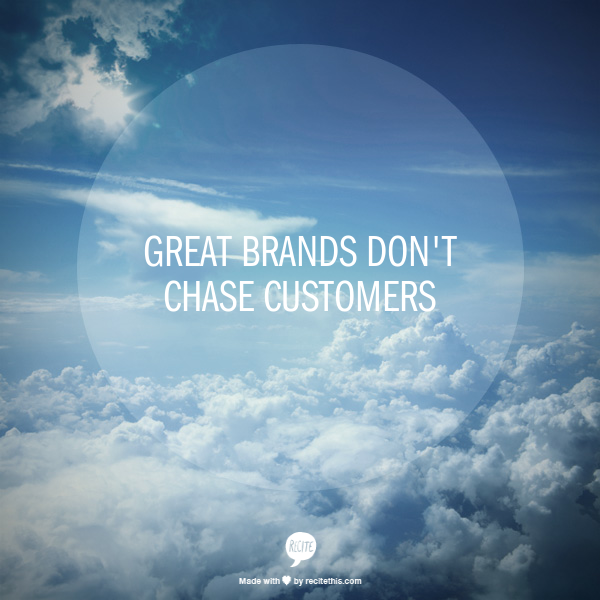Great Brands Don’t Chase Customers
Rolling right along in the series of posters of brand-building principles from my new book, What Great Brands Do, we have:
Great brands don’t chase customers; they attract people to them. Great brands know that if you stand for something clearly, some people will love you and some will hate you, but the ones that love you will buy your brand and be willing to pay a premium for it. Consumers find enormous appeal in brands that insistently convey their strongly forged identities like a lighthouse. When you embrace and celebrate who you are, you attract the people who are destined to be your most loyal, profitable customers.
Miller’s new Miller Fortune product serves as a prime example of how not to follow this principle. I know that last sentence might have been confusing with the double-negative and all, so let me state my point of view clearly: the strategy behind Miller Fortune is to chase customers and that’s why it will most certainly fail. According to Bloomberg BusinessWeek, Miller is launching the product as a high-end, high alcohol-content beer in an attempt to regain ground the beer category has lost to spirits.
The problem is, this pursuit is pulling Miller off its core competence and its brand identity. Instead of projecting its brand intensely and consistently like a lighthouse, Miller is using what I call a “spotlight” approach. They’ve scoured industry data to determine which customers are the most attractive and worthy of a spotlight and put them under virtual magnifying glasses, dissecting every nuance about them. They’re attempting to design their products around their customers and they’re imitating others. Miller’s innovation head goes as far as saying, “We asked, ‘How would Jack Daniel’s or Maker’s Mark do a beer and why?’” And its brand manager proudly claims, “If a spirit’s doing it, let’s consider it.”
Now, please don’t misunderstand me. Clearly I understand the beer category is in dire need of some fresh ideas — and looking outside your category is indeed a smart practice for understanding the broader context in which you operate. But turning your back on your core expertise, copying other brand’s practices, and squandering your brand equity to chase after elusive customers is not what great brands do.
previous posts & posters: (at the conclusion of this series, I’ll compile all of these into a SlideShare to download)
